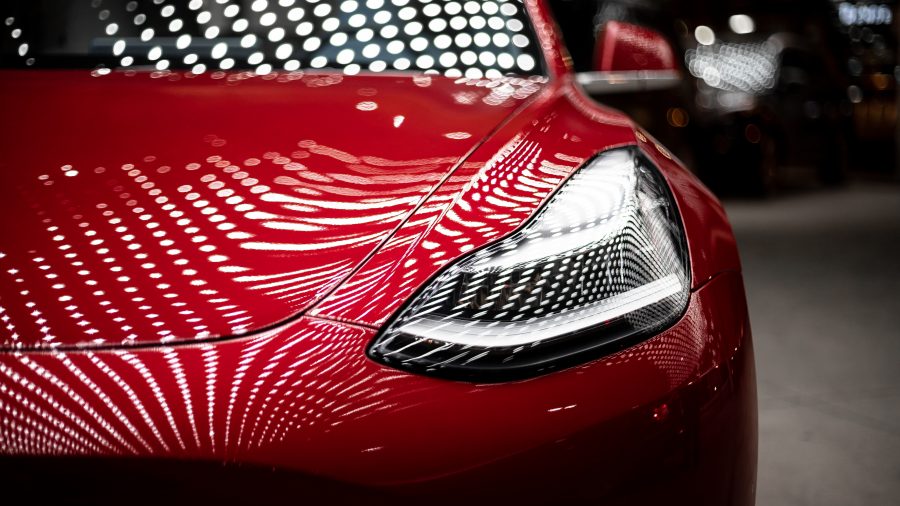While Australians are still getting to grips with electric vehicles (EVs), the next big fuel may be hydrogen. Hydrogen is used in fuel cell vehicles (FCEVs), which convert the gas to electricity. EVs charge directly with electricity. This is only one important difference between the two, but which fuel will win out?
Fuel cell vehicles
Jeremy Clarkson, UK commentator, claimed he was “baffled by the car industry’s apparent reluctance to think more seriously about hydrogen” for two reasons. One, hydrogen is so abundant and two, a hydrogen fuel cell car produces only water from its tailpipe.
It seems he is not alone. When KPMG asked auto executives in 2017 what they thought about EVs compared to FCEVs:
- 62% believed EVs would fail
- 78% believed FCEVs would be the golden bullet of electric mobility.
The main reason they thought EVs would fail was because of difficulties with charging: it takes too long or there is nowhere practical to do it. Thanks to clever marketing by Tesla, which made EVs smart and fashionable, EVs are still out in front.
Charging
It takes at least an hour to charge an EV with a supercharger and, using a normal household socket, from 14.5 to 48 hours. Fuelling a hydrogen car takes only 3-5 minutes, just like putting in petrol or diesel. Hydrogen passes through a fuel stack (stacked to achieve higher voltage and power) where it interacts with oxygen to generate electricity.
While most people are starved of time, it makes more sense to charge with hydrogen. Unfortunately, hardly any hydrogen fuelling stations exist.
It is risky to build fuel pumps if nobody comes, but nobody will come unless there are fuel pumps available. One is coming to Canberra in December 2019, to fuel the ACT government’s fleet of Hyundai NEXO FCEVs. Toyota will build one in Melbourne and Jemena, utility provider, will build in Sydney.
Range
How far an EV can travel depends on how much it cost to buy. A Tesla Model S Long Range can go 600 kilometres, compared to the considerably cheaper Nissan Leaf, which can stretch only 240 kilometres. Even though most people do not drive very far in a week, they always worry about being stranded somewhere.
Meanwhile, the Hyundai Nexo (also expensive) can travel 600 kilometres on one fill-up of hydrogen. It takes only 5 minutes to fill a tank. Hydrogen fuel cell cars can go twice as far on the same amount of fuel energy. This is appealing to companies with fleets of trucks, buses or delivery vans, who cannot waste time filling up and need the most energy for their investment.
Environmental credentials
It is true neither EVs nor FCEVs emit any gases while driving along. But the manufacturing process is a different story.
Lithium-ion batteries in EVs are manufactured using an energy-intensive process that emits 20 tonnes of CO2. Over the lifetime of a typical EV, it will emit 124g/km of CO2.
A hydrogen car produces 120/km of CO2 over its lifetime, including manufacturing. This would be considerably less using renewable hydrogen. Renewable hydrogen can come from solar or wind electrolysis of water, water vapour in the air, crop waste, or biogas from landfills or wastewater treatment plants.
Another matter is transporting the fuel. There is no need to transport electricity while hydrogen, like petrol, must be transported by truck. This makes little logical sense. To this end, CSIRO developed a way of extracting hydrogen from liquid ammonia. Each service station would then carry a liquid ammonia tank and hydrogen refuelling pump.
As it stands, there is no advantage to having an EV or an FCEV as long as Australia depends on fossil fuels.
How much
Buying an EV is still beyond the means of most Australians. The average EV costs over $60,000 but you can buy them for less. A Nissan Leaf starts from $49,000, and Hyundai Ioniq Electric starts at $46,000, before on-road costs. It currently costs about $5.40 to travel 100kms using electricity, compared to $16.65 to travel that distance using petrol. To look at it another way, it costs only 30 cents compared to $1.23 per litre of fuel.
Toyota and Hyundai are the main fuel cell contenders in Australia, but Mercedes-Benz and China’s Grove are also pursuing FCEVs. They are very expensive:
- Toyota Mirai (means “future”) is a sedan, $77,000, range 550 kms
- Hyundai Nexo is a crossover SUV, $90,000, range 600 kms
- Mercedes-Benz GLC F-CELL is part-electric, part-hydrogen, lease only.
It is too early to say what hydrogen will cost. California Fuel Cell Partnership says US hydrogen currently costs $13.99 per kg. National Renewable Energy Laboratory estimates prices will fall to $8-10 per kg by 2020-2025. By then a regular vehicle would cost $0.21 per kilometre compared to $0.19 per kilometre in a fuel cell car.
Future of hydrogen
Toyota and Hyundai are the early investors in hydrogen. If Hyundai is right, hydrogen FCEVs will be cheaper than EVs by 2030. Great Wall Motor, the Chinese auto firm, is investing over US$149 million in research and development of FCEVs. Kia’s vice president design says battery powered electric vehicles are only a transition to hydrogen.
Even so, it is possible EVs and FCEVs will coexist because they meet different needs.
Some say EVs are the best and cheapest approach for city buyers to replace petrol cars. More expensive FCEVs fuelled with hydrogen, would best replace diesel trucks, buses and large SUVs simply because EVs have too many batteries and take too long to charge.
Whatever happens, hydrogen is not going to blow away.


your opinion matters: